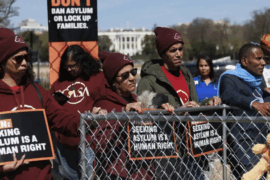The United States’ higher education system is the envy of the world. Our college students can access world class, equitable, affordable four-year programs, and graduate with the financial security necessary to catapult into lucrative, fulfilling professions that—AAAAAHAHAHA! Sorry… I’m sorry, no. I couldn’t keep that up. U.S. college graduates are saddled with career-crippling debt that disproportionately burdens Latinos. Let’s examine the history that led to this disaster.

Sold on the promise of the American Dream, millions of Latinos enrolled in colleges and universities and their corresponding loan programs. Between 2004 and 2016, Latino student debt grew 60% to an average of almost $16,000. Worse yet, 36% of us will owe more in debt than our original tuition. Given unequal job market opportunities, 18% of Latino borrowers are behind on our loans compared to 9% of our white counterparts.

Adjusted for inflation, a four-year college degree in 1969 cost $12,000 instead of today’s $29,000. In the 1970s, hit by a massive oil shock and economic recession, the federal government cut back on educational spending, allowing private loan originators to fill the gap.

Colleges and universities began to compete, not just on education quality, but also amenities like new stadiums and dorms, leading to a building boom and huge rise in enrollment costs. The 2008 financial crisis further exacerbated student debt as cash-strapped states drastically reduced their grant programs in favor of loans.

The COVID pandemic led the federal government to pause student loan repayments between 2020 and 2023, providing a much-needed lifeline to millions of Latinos. In 2023, the Supreme Court rejected President Biden’s plan to forgive student loans under $10,000, which would have allowed half of Latino students to go debt-free. Nevertheless, the administration canceled $1.3 billion of debt in 2024 for 150,000 individuals who made payments on loans under $12,000 over the last ten years.




